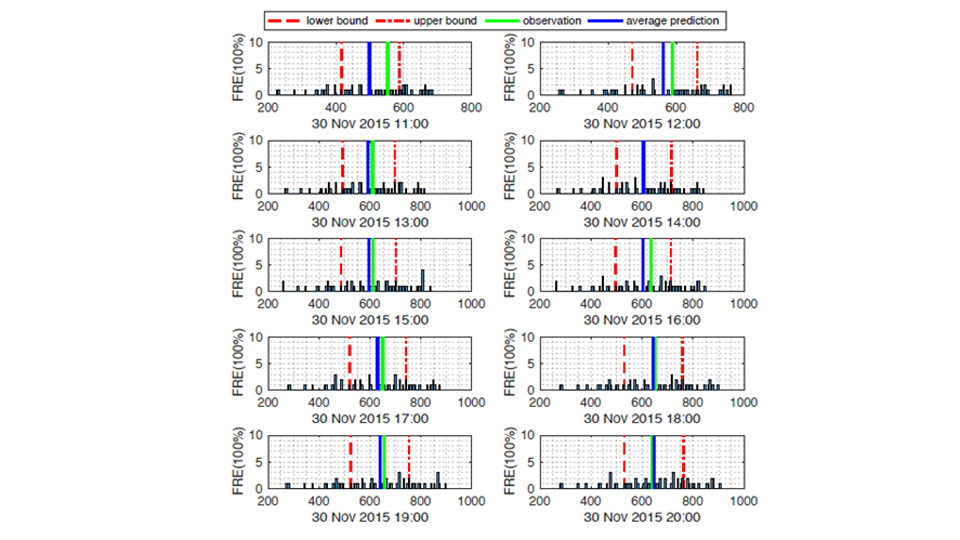An unusual concept for us here in the UK, but it is a genuine concern for communities all over the world with air pollution killing an estimated seven million people every year.
A team of Loughborough University computer scientists are hoping to help eradicate this fear with a new artificial intelligence (AI) system they have developed that can predict air pollution levels hours in advance.
The technology is novel for a number of reasons, one being that it has the potential to provide new insight into the environmental factors that have significant impacts on air pollution levels.
Professor Qinggang Meng and Dr Baihua Li are leading the project which is focussed on using AI to predict ‘PM2.5’ - particulate matter of less than 2.5 microns (10−6 m) in diameter – that is often characterised as reduced visibility in cities and hazy-looking air when levels are high.
Particulate matter is a type of air pollutant and it is the pollutant with the strongest evidence for public health concern.
This is because the particles are so small they can easily get into the lungs and then the bloodstream, resulting in cardiovascular, cerebrovascular and respiratory impacts.
According to the Department for Environment, Food and Rural Affairs, there is understood to be ‘no safe threshold below which no adverse effects would be anticipated’.
 Image courtesy of Getty Images.
Image courtesy of Getty Images.
There are systems that already exist that can predict PM2.5 but Loughborough University’s research looks to take the technology to the next level.
The system the researchers have developed is novel for the following aspects:
- It predicts PM2.5 levels in advance – giving predictions for the levels in one hour to several hours’ time, plus 1-2 days ahead
- It interprets the various factors and data used for prediction, which could lead to a better understanding of the weather, seasonal and environmental factors that can impact PM2.5
- It doesn’t just predict one figure; it predicts the PM2.5 level plus a range of values the air pollution reading could fall within – known as ‘uncertainty analysis’
- It has the capabilities to be used as an air pollution analysis tool in a carbon credit trading system.
The system’s uncertainty analysis and ability to understand factors that affect PM2.5 are particularly important as this will allow potential end-users, policymakers and scientists to better understand related causes of PM2.5 and how reliable the prediction is.
Dr Yuanlin Gu is the Research Associate working on the project at Loughborough University. The LU team created the system using machine learning – a type of artificial intelligence technology that uses large amounts of data to learn rules and features, so a system can make predictions.
The researchers used public historical data on air pollution in Beijing to train and test the algorithms; China was selected as the focus as 145 of 161 Chinese cities have serious air pollution problems.
The developed system will now be tested on live data captured by sensors deployed in Shenzhen, China.  Prediction uncertainty analysis. The green line is the actual PM2.5 levels measured from a sensor. The blue line is the system’s PM2.5 prediction. The red lines outline the probability range the system believes the levels will fall within.
Prediction uncertainty analysis. The green line is the actual PM2.5 levels measured from a sensor. The blue line is the system’s PM2.5 prediction. The red lines outline the probability range the system believes the levels will fall within.
The system developed at Loughborough University is part of a wider research project funded by the Newton Fund, which has four partners: Satoshi Systems Ltd, Loughborough University, Shenzhen Institutes of Advanced Technology, and EEG Smart Intelligent Technology in China.
The aim of the project is to explore how carbon can be used as a tradeable commodity to establish a new effective economic leverage for controlling emissions.
It is envisaged that cities, regions and factories will be given credits for how much carbon they can emit and if they go over it must ‘buy’ more credits. Alternatively, if a location falls under its limit, it can sell the surplus credits on the carbon market for a profit.
The aim is to integrate Loughborough University’s PM2.5 prediction model onto an online platform that can be accessed by participants of the carbon trading scheme.
This will allow participants to use the system to access real-time, meaningful information on pollution levels that will aid them with designing a trading strategy.
 Image courtesy of Getty Images.
Image courtesy of Getty Images.
Of the research, Professor Meng said: “Air pollution is a long-term accumulated challenge faced by the whole world, and especially in many developing countries.
“The project aims to measure and forecast air quality and pollution levels. We also explore the feasibility of linking the real-time information on carbon emission to end-to-end carbon credit trading, thus dedicating to carbon control and greenhouse gas emission reduction.
“We hope this research will help lead to cleaner air for the community and improve people’s health in the future.”
Mr Saurabh Goyal, CEO of the industry partner Satoshi Systems Ltd, added: “We are impressed and excited by the work done by Loughborough University.
“We believe that all types of participants such as polluters, cleaners, market makers, hedgers, speculators, government and policymakers will find this data very useful before they buy or sell carbon credits on our platform.
“We are currently under discussions with governmental and civic authorities in both China as well as the UK to set up the exchange.
“Anyone interested in participating in this emissions exchange platform can reach out to me at saurabh.goyal@satoshi.ltd.”
More information on the wider ‘Triple-Network Air Quality Monitoring and Carbon Credit Trading Platform for Sustainable Urban Environments’ project can be found here.









